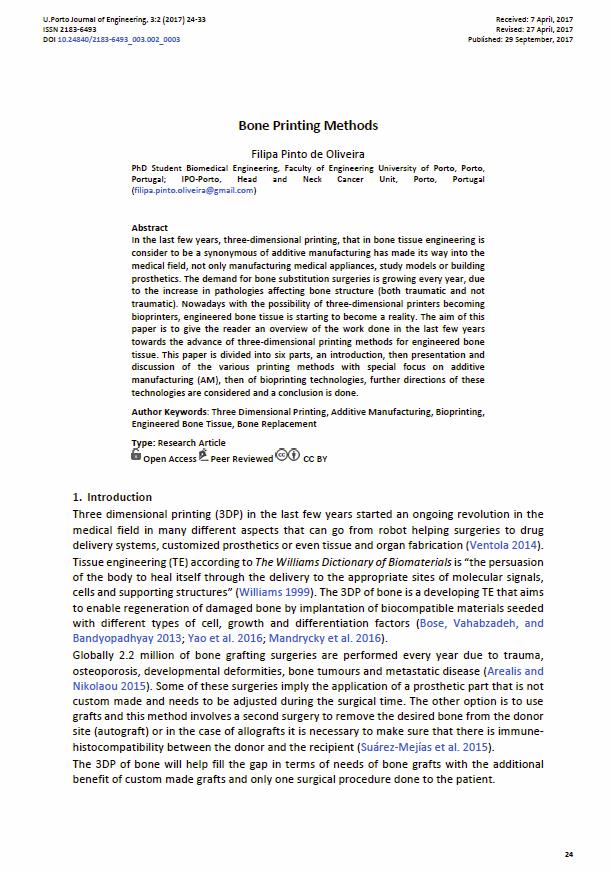Bone Printing Methods
Main Article Content
Abstract
consider to be a synonymous of additive manufacturing has made its way into the medical field, not only manufacturing medical appliances, study models or building prosthetics. The demand for bone substitution surgeries is growing every year, due to the increase in pathologies affecting bone structure (both traumatic and not traumatic). Nowadays with the possibility of three-dimensional printers becoming bioprinters, engineered bone tissue is starting to become a reality. The aim of this paper is to give the reader an overview of the work done in the last few years towards the advance of three-dimensional printing methods for engineered bone tissue. This paper is divided into six parts, an introduction, then presentation and discussion of the various printing methods with special focus on additive manufacturing (AM), then of bioprinting technologies, further directions of these technologies are considered and a conclusion is done.
Downloads
Article Details
Authors who publish with this journal agree to the following terms:
- Authors retain copyright and grant the journal right of first publication with the work simultaneously licensed under a Creative Commons Attribution License that allows others to share the work with an acknowledgement of the work's authorship and initial publication in this journal.
- Authors grant the journal the rights to provide the article in all forms and media so the article can be used on the latest technology even after publication and ensure its long-term preservation.
- Authors are able to enter into separate, additional contractual arrangements for the non-exclusive distribution of the journal's published version of the work (e.g., post it to an institutional repository or publish it in a book), with an acknowledgement of its initial publication in this journal.
- Authors are permitted and encouraged to post their work online (e.g., in institutional repositories or on their website) prior to and during the submission process, as it can lead to productive exchanges, as well as earlier and greater citation of published work (See The Effect of Open Access).

